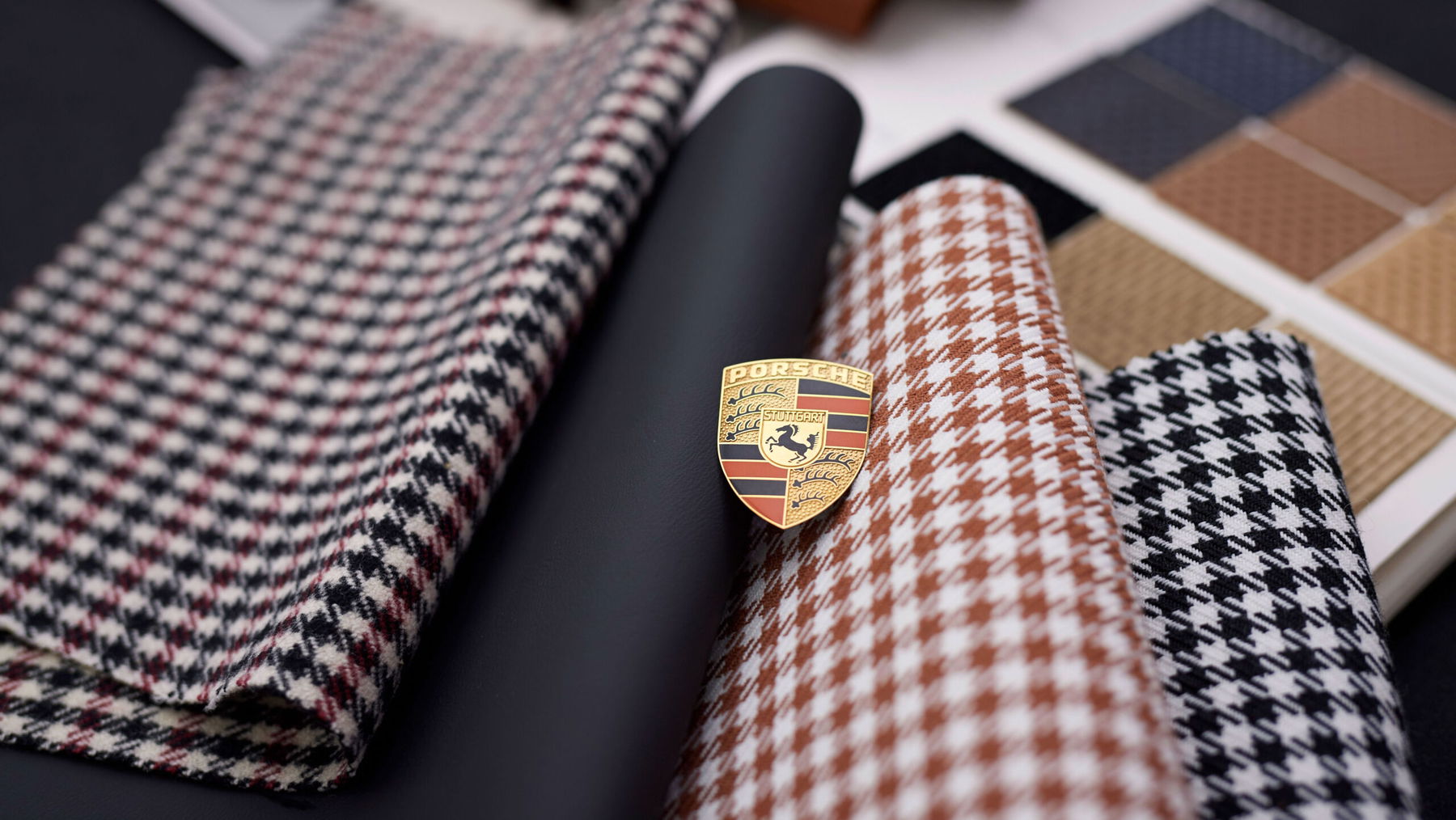
Porsche has always stood not only for sports cars with exceptional performance – Porsches have always been special in the interior too. In the past, the Porsche seat designs have sometimes been extremely polarizing. But isn’t this individuality, this courage to be unique, exactly what we love about Porsche? We take Porsche’s recently revived Pasha interior with the 911 Spirit 70 as an opportunity to take a closer look at Zuffenhausen’s most unusual seat designs.
Let’s start gently. Naturally, every manufacturer is proud to put its name on their cars. On Porsche sports cars, the motto was usually: an emblem at the front, Porsche lettering and the model designation at the rear, an emblem on the steering wheel. With the introduction of seat patterns in the so-called Porsche Script Design, the Zuffenhausen-based company began to display its name in significantly greater numbers.
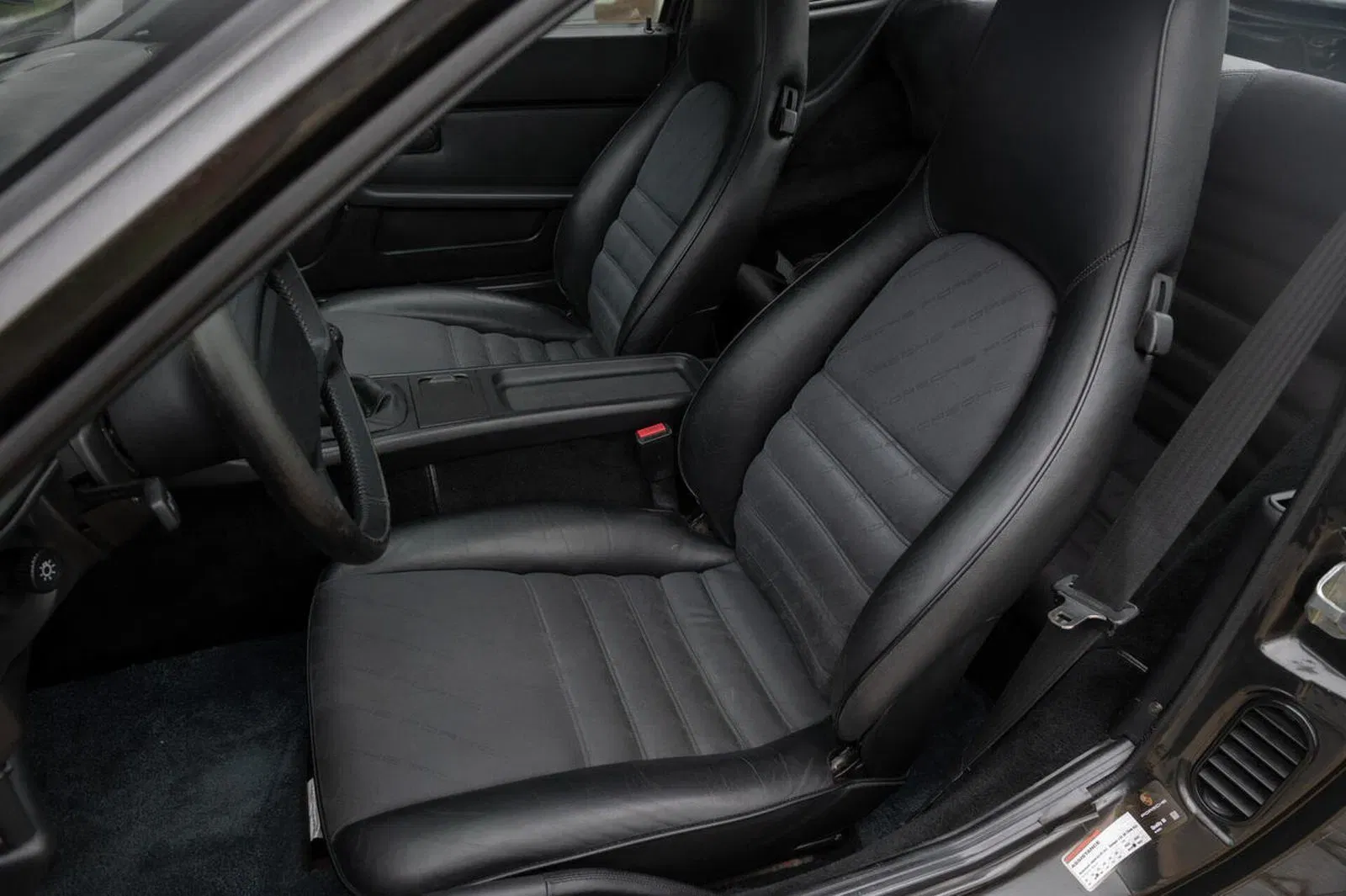
Although the design is still very discreet, we are not aware of any other manufacturer that has immortalized its company name so frequently in a vehicle interior. According to our information, Porsche Script was available in the colors blue, black, wine red, linen and amethyst. The Script seat pattern has not been offered since the mid-90s and has not been reissued since then – what a shame!
In the 70s and 80s, they were the order of the day and adorned countless suits: Pinstripes. Porsche took up this design trend and offered pinstripes in an almost limitless variety of colors. The so-called flannel stripes went in the same direction. Similar to pinstripes, but with dots instead of continuous stripes. Chestnut brown with white stripes? No problem at all! Customer’s could order the wildest combinations in that era. For example, there were orange-red pinstripes on the Porsche 924 Carrera GT.
The Porsche 924 Carrera GT was fitted with orange pinstripe seats, which are still a real eye-catcher today. © Garage Dakar
If you scroll through today’s classifieds, many transaxle models are equipped with pinstripe interiors. Many customers ordered their 911 G-models with the Porsche pinstripe seat pattern as well. Porsche, being a very tradition-conscious manufacturer, offers similar interior designs today. Many Porsche 991 models, especially Carrera Ts were often ordered with Sportex seats in the classic dotted-line-design.
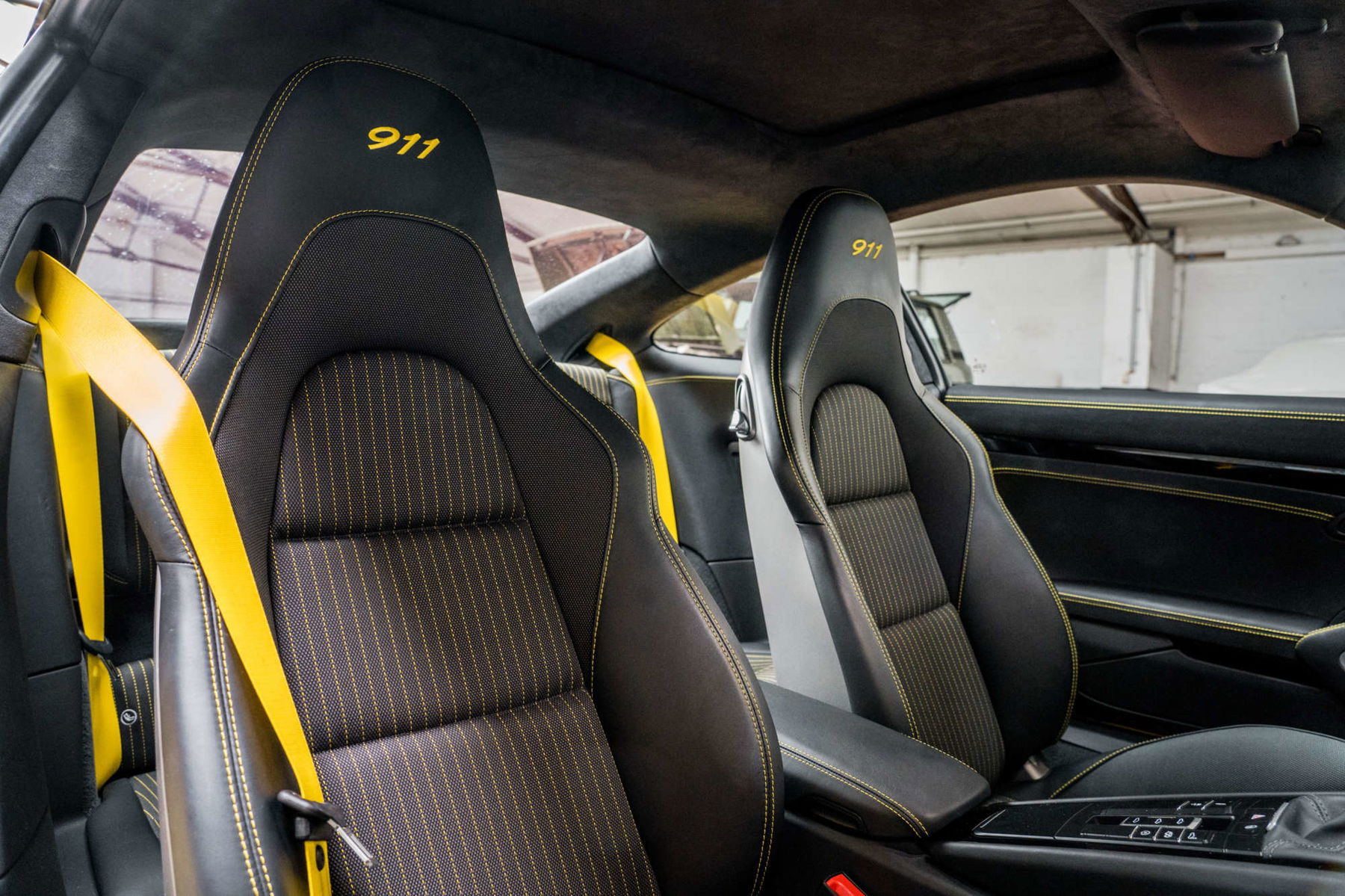
One of the best-known Porsche seat patterns is certainly the Pepita Karo from the 1960s, which was already used in the 911 F-model. In most cases, customers ordered the black/white Pepita seats with black leather side bolsters. Combined with a classic wooden steering wheel and the green dials, it does look like a really classy interior. Pepita Karo was also available in black/red, black/green and black/brown.
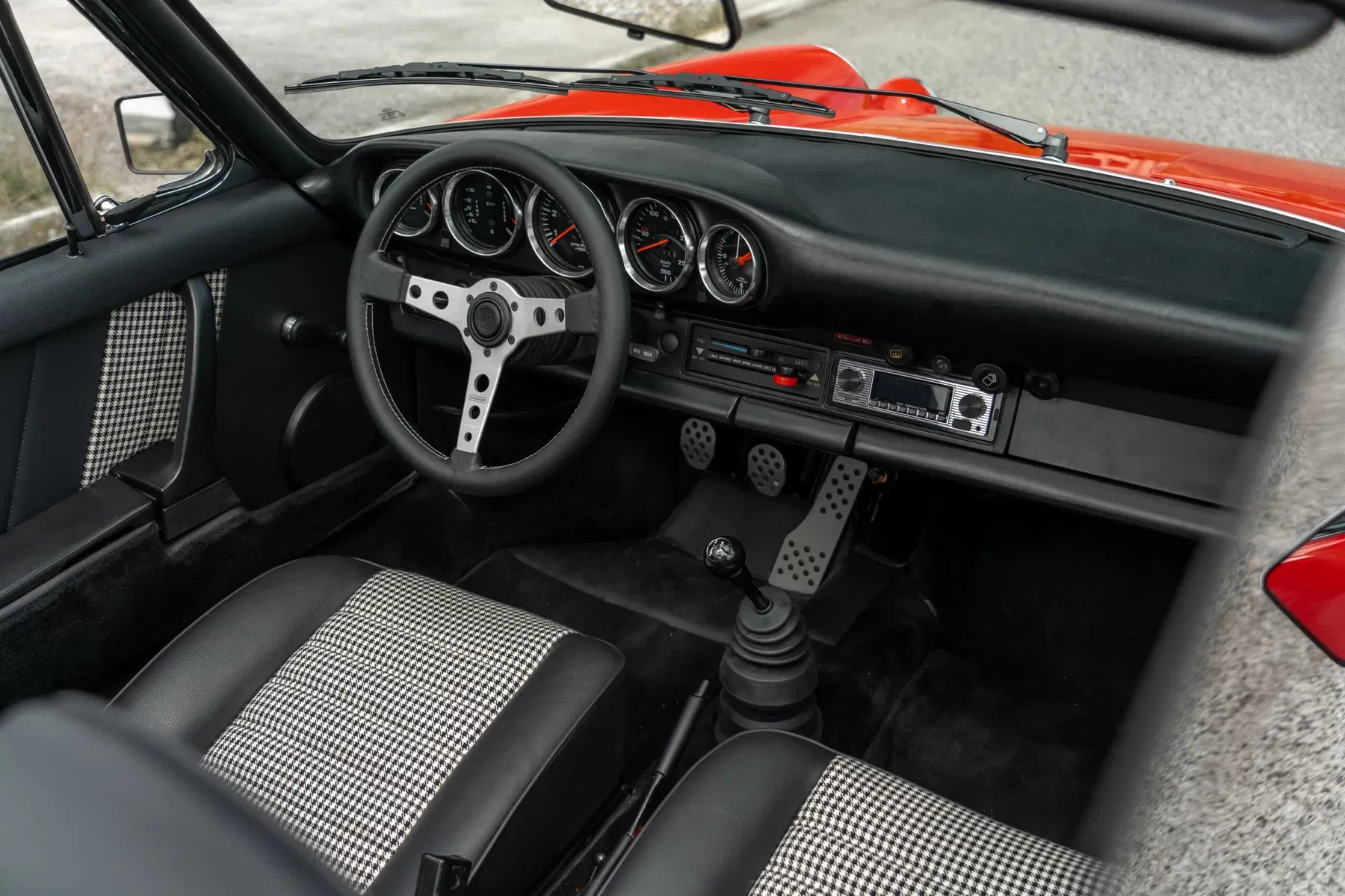
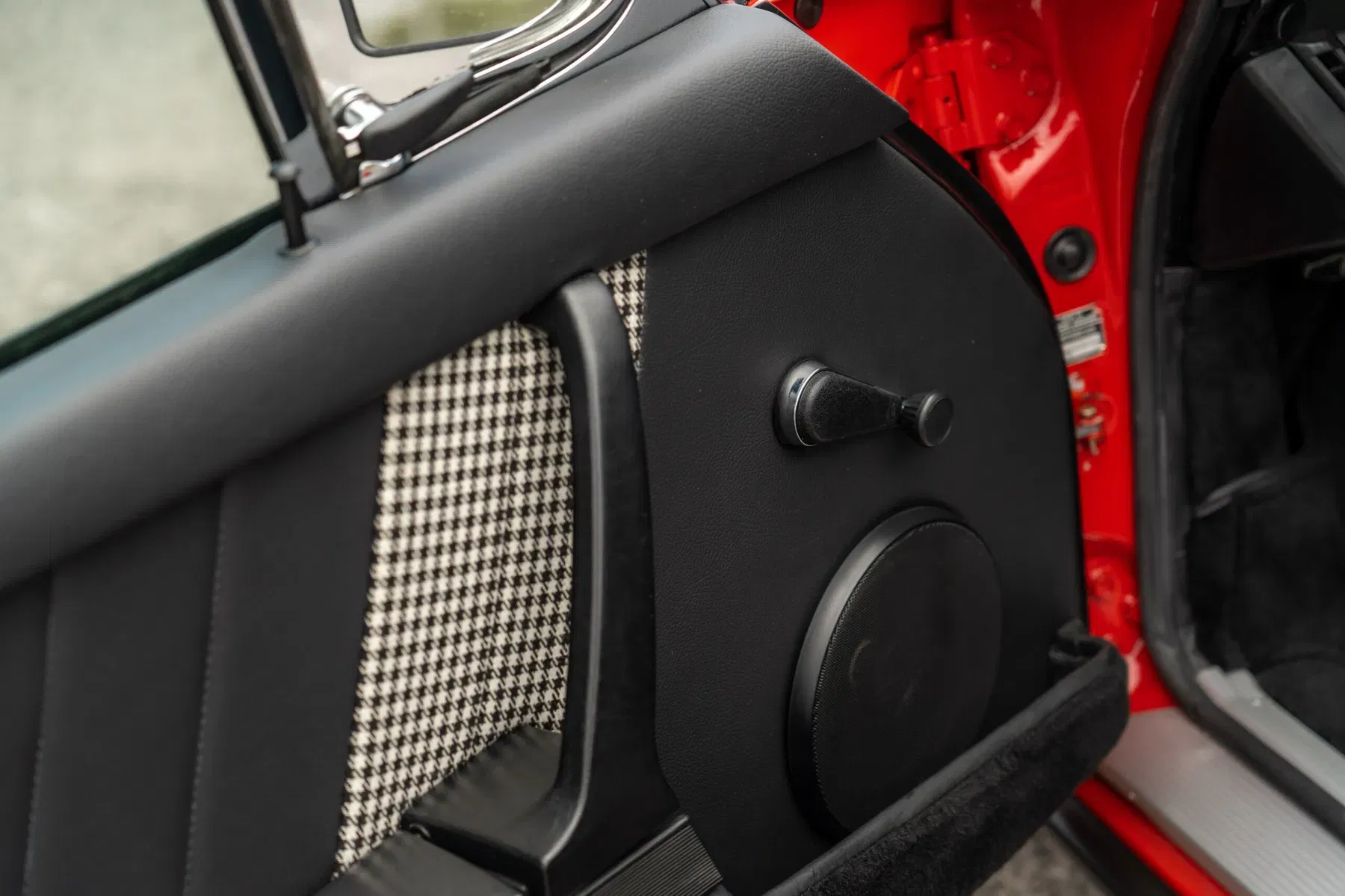
Pepita seat patterns can be found from time to time in the regular Porsche equipment catalog for certain models. For example, the design was part of the repertoire for the special Porsche 991 Carrera 50 Years Edition model. The Stuttgart-based company also used the classic Pepita seat pattern in the Porsche 992 GT3 and Sport Classic. It is also one of the most popular patterns when it comes to retrofitting aftermarket seat inserts in bucket seats, such as those offered by Project Pepita or Justin Placek.
Pepita is timelessly beautiful both in the fashion world and in Porsche interiors. © Pannhorst Automobiles
In the late 1980s and early 1990s, Porsche offered another fabric combination that still has many fans today: Multicolor. This pattern consists of many small squares of different colors, which together create a color gradient. Among other things, the Stuttgart-based company used the multicolor fabric in the 1,635 Porsche 944 Turbo S models built. In that instance, Porsche opted for the wine red color scheme.
The multicolor fabric seat was particularly popular in the 944 and 968. It was also standard in the Porsche 944 Turbo S. © Dr. Georg Konradsheim
Porsche’s multicolor fabric was also available in the later Porsche 968, the 964-generation 911 and the last 928 models. A total of seven color options were available. All regular leather colors, apart from the special leather, were also available in Multicolor and Script at the time. These were: black, light gray, cashmere beige, classic gray, cobalt blue, magenta and navy blue.
Porsche Jubilee is a special form of Porsche Tweed fabric and became particularly popular in the 1975 model year Porsche 911 “25th anniversary model”. With this special model, Porsche celebrated 25 years of production in Stuttgart. In the interior, the black and blue tweed fabric was used on the seat center panels and on the dashboard.
Porsche Jubilee is not only beautiful, but also a real haptic pleasure. © Boxer Motor
Thanks to the pattern with rectangles of different sizes, the seat pattern, also known as Berber, almost gives the impression from a distance that the seats are shimmering. If you run your hand over the seats, you can feel the special structure of the woven pattern, which no other Porsche seat offers.
Another 70’s fashion trend had been the Tartan design. The idea itself was borrowed from the Scottish kilts and their so called “clan tartans”. You could have ordered your Porsche with pretty mad color combinations back then. Especially the Turbo models were often ordered with these Porsche seat patterns.
The reason for that might very well be the Porsche 911 Turbo “Louise” – the first 911 Turbo ever and a present to Louise Piëch. As she was a passionate painter, she was pretty bold in terms of her interior styling. Nearly every single surface in the cabin was covered in Porsche’s Tartan pattern. She even went for red leather side bolsters, which sounds very weird, but, amazingly, looks pretty pleasing.
With a matching exterior color and an otherwise black interior, the tartan check in red and blue, for example, really comes into its own. © Autosport Brouns
Many backdates and modified 911s use the Porsche seat pattern “Tartan” nowadays. As a contrast to the otherwise pretty functional interiors of the 70’s and 80’s Porsches, it does the job pretty well. Who owns a car with Porsche Tartan always makes a pretty clear fashion statement. If you look at today’s cars, you often see Porsche 911 GT3 Tourings and Spyders equipped with Porsche Tartan.

Let’s be honest: There can’t be a list of the coolest and prettiest Porsche seat patterns without the Pasha seats. Porsche’s psychedelic 70’s and 80’s interiors were a must have for many customers. It shouldn’t hit you by surprise, how many 924s, 944s, 928s and G-model 911s are out there with the Pascha seat pattern. As you may have guessed already, who ordered Pasha seats, often decided to paint the car itself in a very contemporary manner as well. Roughly 40 years ago, Porsche customers seemed to be a bit more fashion conscious…
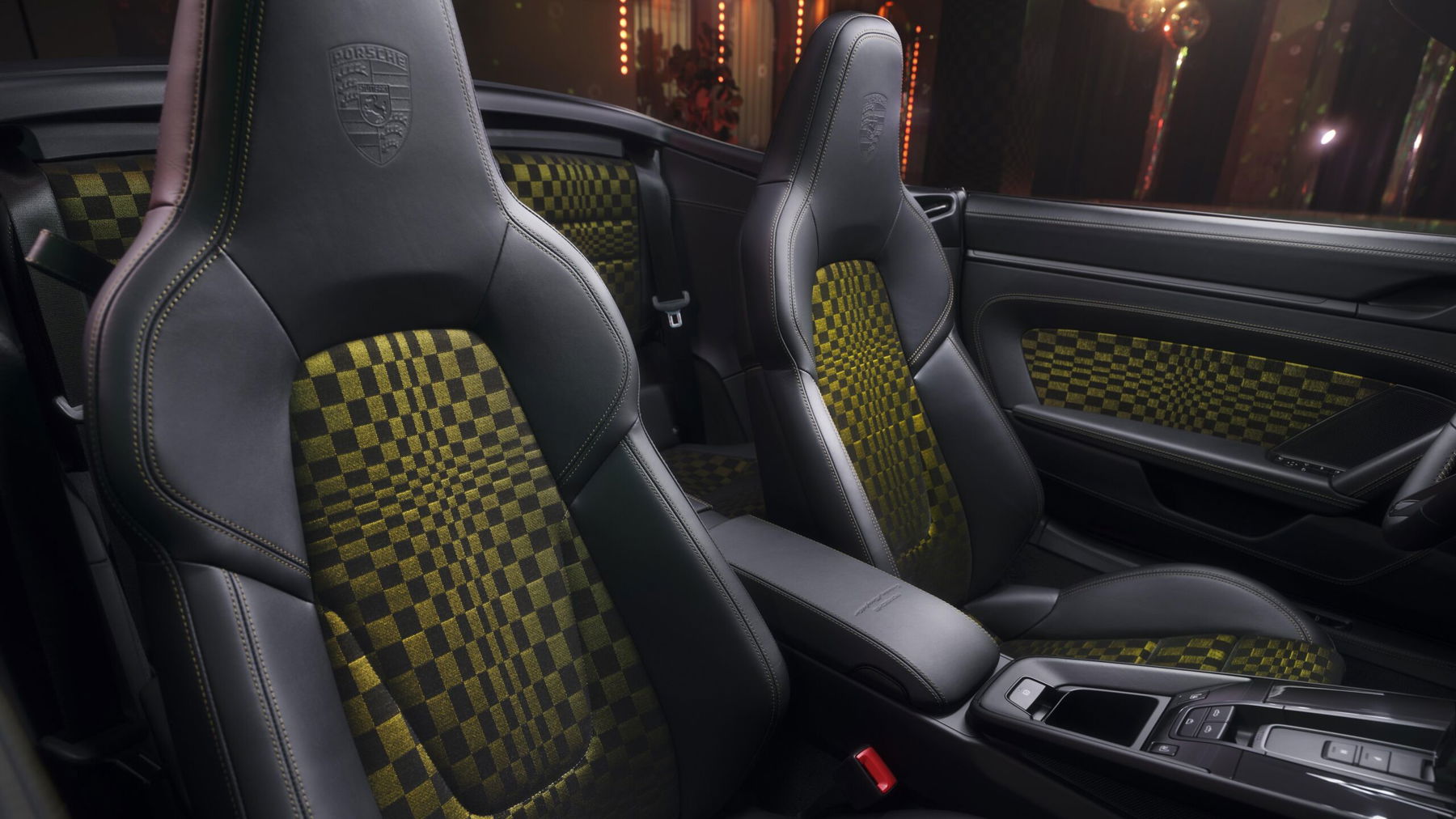
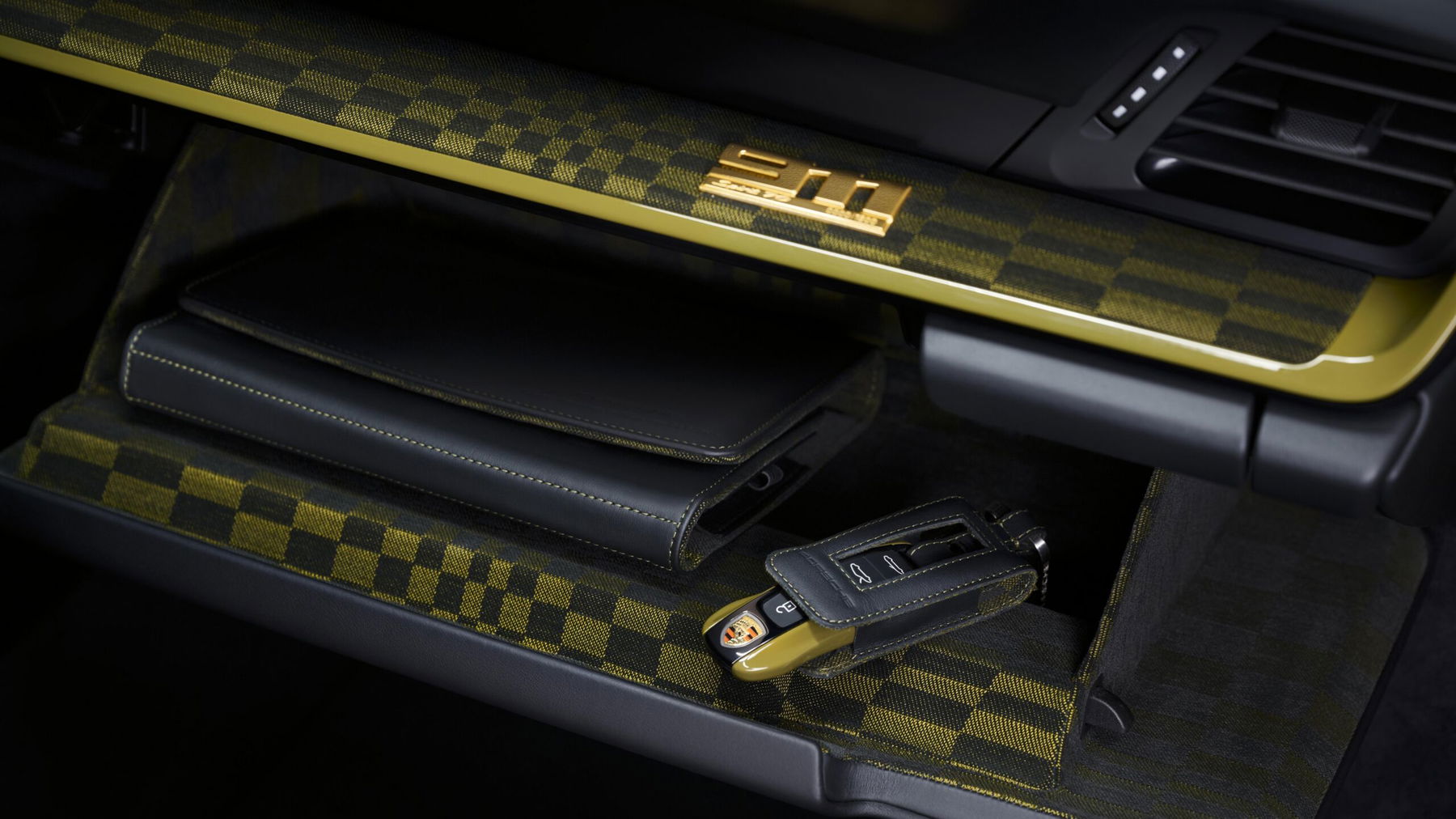
White/brown, white/red, black/blue, black/white… the Pasha interior was a must-have for many buyers at the time. With the Porsche 911 Spirit 70, Porsche has finally been offering a new edition of the legendary Pasha design since 2025. In addition to the olive/neo/black combination in the limited-edition Cabriolet, the more discreet black/dark silver combination is available in all 992.2 models for just under 11,600 euros extra.
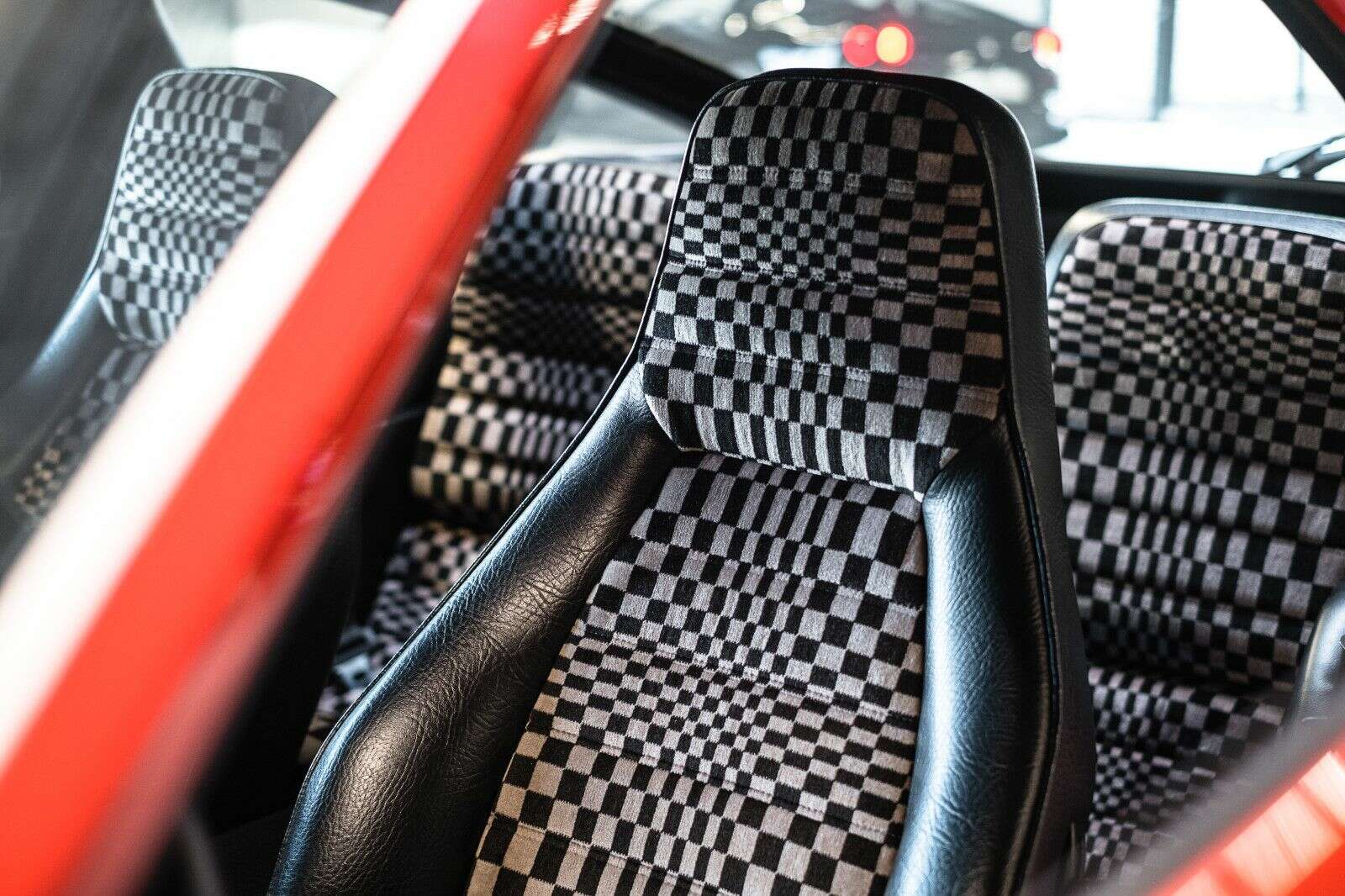
In recent years, Porsche has recorded a significant increase in sales in the Exclusive Manufaktur and also for vehicles from the special request program. Customers gratefully accept the offer of classic interiors with the contemporary seat patterns of earlier days. The various patterns are so trendy that there are even floor coverings inspired by them from elferFloor. And the return of the Pasha interior shows that Porsche dares to reinterpret the chic of yesteryear.
© title image: Porsche AG
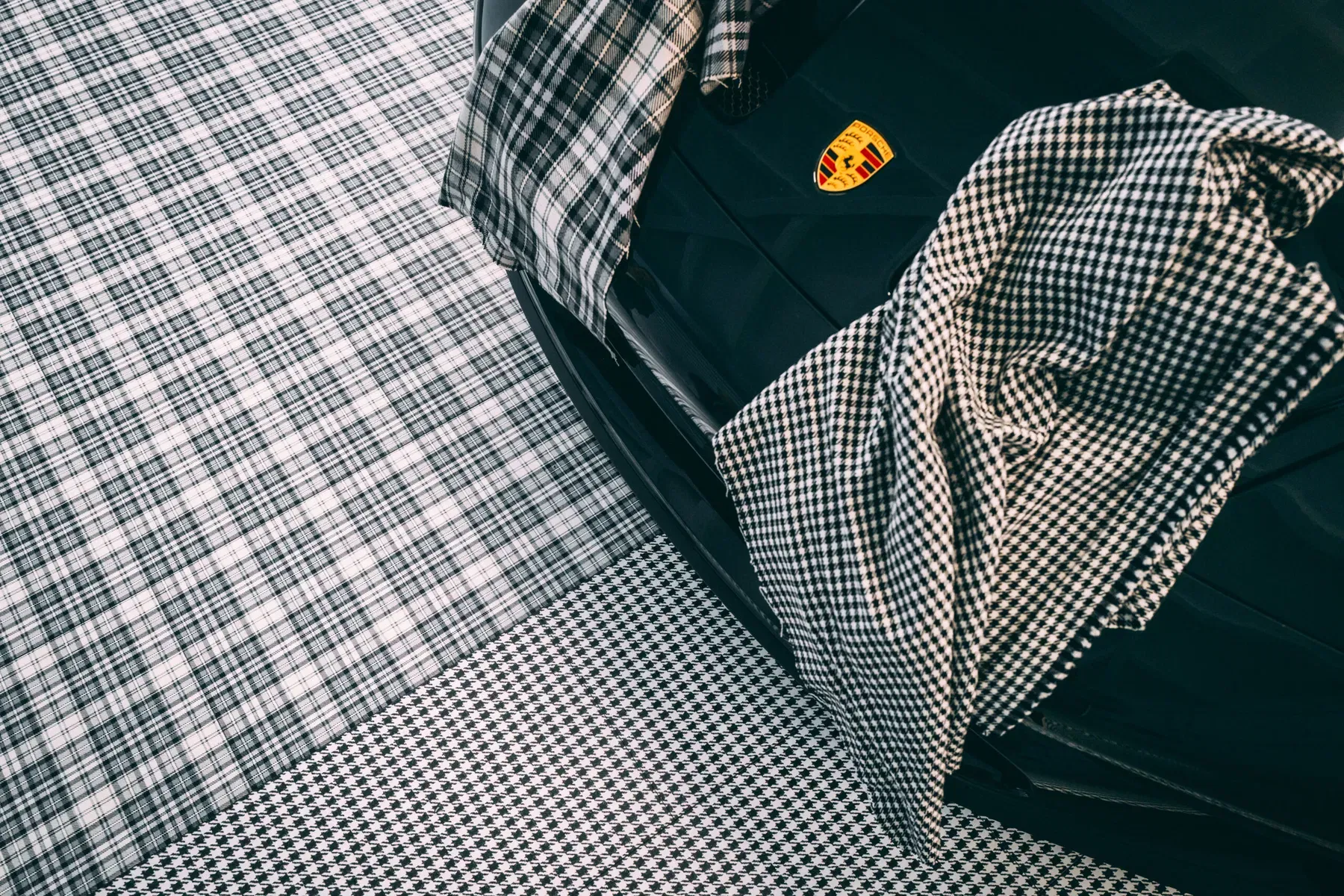
Elferspot magazine